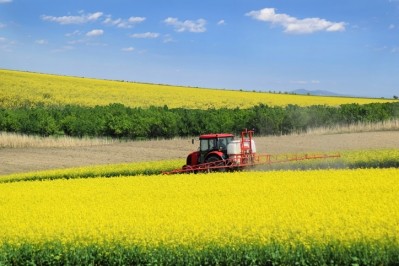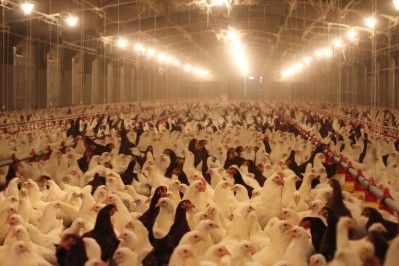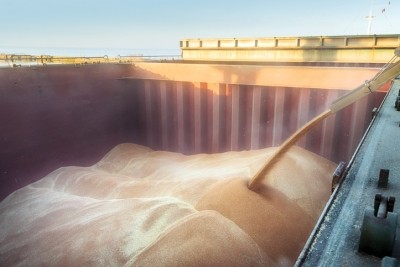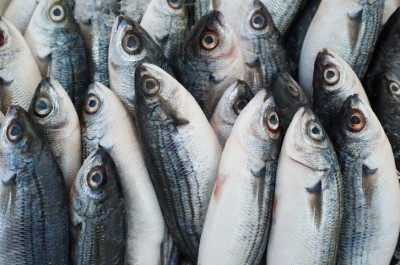Team looks to halt mineral leaching in extruded fish feed
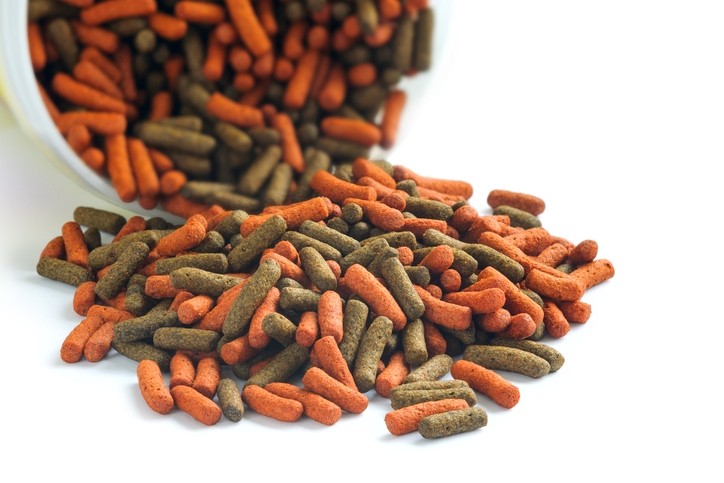
A team of researchers with the Institute of Food Technology and the National Institute of Limnology in Argentina want to evaluate optimization of the extrusion process in order to have a fish feed with maximum residual phytase activity, minimum mineral leaching and good mechanical characteristics.
The group published its work in the journal of Animal Feed Science and Technology.
The aims of this work were to develop a fish feed formula based on vegetable meals added with phytase enzyme, to optimize extrusion conditions in order to have a product with maximum water resistance, floatability, and residual phytase activity; but minimum mineral leaching, and to assess P, Ca, Fe, and Zn retention of this feed using a juvenile P. mesopotamicus model.
“It was demonstrated that feed with approximately 4000 PU/kg increased mineral retention respect to the control diet and the higher bioavailable iron did not affect oxidative status or lipid oxidation of fish tissues at the used iron level,” the researchers said. “Thus, extrusion process can be optimized to obtain fish feed based on vegetable meals with high residual phytase activity and low mineral leaching, which reduces eutrophication of the water environment, increasing mineral retention in P. mesopotamicus.”
Why feed extrusion and qualities?
Phosphorus is an important mineral in fish diets and is needed in higher amounts than other minerals, the researchers said. Without necessary levels, fish growth is reduced and bone deformities may develop.
However, there can be challenges to adding phosphorus (P) to the diet including that adding excess P reduces the uptake of zinc and P is considered an element in eutrophication of water, they said. It is important that the excretion of P is minimized in fish production.
Other important minerals for fish diets include iron and zinc, they said. “A loss of minerals in water decreases the nutritional quality of the food and can affect the fish growth, increasing production cost due to greater supplementation,” they added.
Feed can be generated through pelleting or an extrusion process, they said. Extrusion is often used to generate fish feed as it can improve characteristics of the feed including water stability, hardness, buoyancy and durability.
Exchanging an amount of fishmeal for an alternative protein like soybean meal also maybe improve the physical quality of a feed, said the researchers.
“However, the direct use of the leguminous oilseed as a dietary ingredient is limited since the presence of phytic acid and other anti-nutritional factors such as tannin, glucosinolates, saponins, soluble no starch polysaccharides and gossypol, which are not destroyed or inactivated by processes involved with product manufacture or during extrusion pelleting,” they said.
Soybean meal has about 14g/kg phytic acid, they said. However, the majority of the P content is phytate and not available to fish, which makes it important to find ways to boost mineral availability in extruded fish feeds that incorporate vegetable meals.
One potential is the use of a microbial phytase – an enzyme that catalyzes phytate and can improve mineral bioavailability, they said. However, little is known about the interaction of extrusion conditions on phytase activity and mineral leaching.
“Moreover, there are not reports about residual phytase activity after the extrusion process and even less about optimized extrusion conditions to obtain a fish feed with maximum residual phytase activity and minimal mineral leaching,” said the researchers.
Methods and materials
In the feed production trial, two experimental diets were generated CEF and PEF using corn meal, soybean meal, bovine plasma protein concentrate, corn starch, vitamin-mineral mix, canola oil and thermos-resistant microbial phytase, the researchers said. Diets were formulated to meet the needs of P. mesopotamicus.
Ingredients were mixed in a dough mixer and sealed and stored to achieve moisture stabilization, they said. Extrusion was done on a Brabender 10 DN single-screw extruder using “3:1 compression ratio screw, a 3/20 mm (diameter/length) die and 175 rpm screw speed.”
Blend moisture (M) and extrusion temperature (T) were examined for their influence on specific volume (SV), floatability (F), residual phytase activity (RPA), leached phosphorus (LP), leached zinc (LZn), leached iron (LFe) and leached calcium (LCa), water resistance (WR), they said. “The levels of each factor were: T: 160–180–200 °C and M: 140–160–180 g/kg,” they added.
The same analyses were made of the control or CEF diet, which included the same ingredients without phytase, they said.
Diets also were chemically analyzed, and phytase activity after extrusion was tested, said the researchers.
Additionally, 24 juvenile P. mesopotamicus were given one of two diets, CEF or PEF, for a period of 38 days, they said. Fish were collected at the end of the trial to check for body weight, total and standard length, lipid peroxidation, mineral retention (TMR) and enzyme levels.
Results
Overall, an influence was found on feed produced when examining temperatures and moisture level, the researchers said. It was possible to optimize the extrusion process to maintain phytase activity post-extrusion along with physical properties of the feed and low mineral leaching.
“Fish consuming PEF with RPA of 3934.9 ± 47.7 UP/kg had higher iron, zinc, and phosphorus retention than those fed with control extruded feed (CEF) obtained under the same optimal conditions,” they said. “However, no significant difference in final body weight was detected between dietary treatments after 38 days of feeding trial at 25 °C.”
Feed-specific volume was found to be inversely related to moisture and was largest at an intermediate temperature – 183 C, they said.
“Regarding floatability (F), the effects of T and M were significant in both, linear and quadratic terms, they said. “F response surface showed a maximum at intermediate values of T and M (182 °C and 151 g/kg).”
There was a reduction in phytase activity post extrusion ranging from 30.2 to 42% pending on the temperatures and moisture levels, said the researchers. Leached P decreased as temperatures rose but grew with an increase in moisture levels.
“Moreover, LZn and LFe response surfaces showed a minimum at 194.1 °C and 150 g/kg M,” they said. “In all cases, mineral leaching was inversely related with WR,” they said.
The optimal conditions were found to be 183.6 C and 158 g/kg of moisture, they said.
“Fish consuming PEF had higher iron, zinc, and phosphorus retention than those fed with CEF diet,” they said. “However, there was no significant difference in calcium retention between diets. Moreover, there were not significant differences in lipid peroxidation (LPO) or enzymes involved in the antioxidant system (glutathione S-transferase, glutathione reductase, glutathione peroxidase, catalase, and superoxide dismutase) of liver, intestine, and muscle between diets.”
Source: Animal Feed Science and Technology
Title: Extruded fish feed with high residual phytase activity and low mineral leaching increased P. mesopotamicus mineral retention
Authors: R. Cian, C. Bacchetta, J. Cazenave, S. Drago
DOI: doi.org/10.1016/j.anifeedsci.2018.03.016
